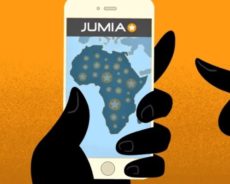
Technology transportation network company Uber is getting creative in improving driver and passenger safety and has just launched a new facial recognition system that takes selfies to identify drivers.
Real-Time ID check, as the intelligent new safety feature is called, has now been introduced in Nigeria. Ghana and Kenya. It has been introduced to driver-partners in South Africa, and based on its success, it has been introduced to other markets in Africa.
How does it work?
The newly launched Real-Time ID check technology works by prompting driver-partners to share a selfie from time to time before going online. Uber then compares this image to the photograph already on file with the account. This info is then achieved through advanced facial recognition technology.
The system first identifies a face, then it builds a feature set by focusing on key features, and finally compares the feature set to the validated image Uber has on file.
This all takes place within a few seconds.
If the two images don’t match, the account is temporarily blocked while Uber looks into the situation. This helps Uber to ensure in real time that the driver-partner using the app matches the account it has on file.
How do passengers benefit?
Real-time ID check assures riders that when they are picked up, the right person is behind the wheel.
It also protects driver-partners from fraud, theft and risks to their account being compromised – only the registered driver-partner can use and earn a profit from the app.
Real-Time ID Check is a phased roll out and not all driver-partners will see this right away.
This new development is part of Uber’s ongoing commitment to creating simple, intuitive technology that not only makes the lives of riders and driver-partners easier but keeps everyone safe at every step of their Uber journey.
Why selfies?
The innovation behind Real-Time ID started with experimentation with voice, facial and gesture recognition. Each technology was tested within the widely diverging environments in which Uber operates.
The quality of voice recognition decreased in noisy, high-traffic environments and was impractical for hearing and speech-impaired driver-partners.
Gesture recognition tested well but presented a steep learning curve as many are unused to this technology.
The simple action of taking a selfie, however, has become a language that people all over the world understand. Alon Lits, general manager for Uber sub-Saharan Africa explains that the extra security feature must not inconvenience driver-partners. “For this reason, we focused on making the user experience as simple as possible from the beginning of the project, testing it on driver-partners around the world to ensure it is a simple, effective and quick experience.”
While visual recognition has existed for a while, this is the first time it has been applied on such a scale to enhance security for both driver-partners and riders.








